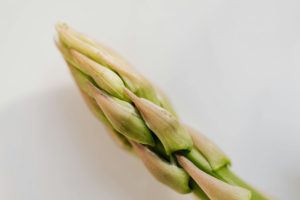Mastering Sous Vide Immersion Circulators for Perfect Results
Sous vide immersion circulators have been gaining popularity in recent years among both home cooks and professional chefs. This cooking technique, which involves vacuum-sealing food and submerging it in a precisely controlled water bath, allows for consistent and precise cooking of meats, vegetables, and even desserts. For those looking to elevate their cooking game and achieve perfect results every time, mastering sous vide immersion circulators is a must. In this article, we will delve into the ins and outs of sous vide cooking and provide tips and tricks for mastering this technique with immersion circulators.
What is Sous Vide Cooking?
Sous vide, which means “under vacuum” in French, is a cooking method that originated in the 1970s. It involves placing food in a plastic bag and submerging it in a water bath that is held at a constant temperature. This allows for precise and consistent cooking, as the temperature of the water never fluctuates. The food is cooked evenly from edge to edge, resulting in perfectly cooked and tender meats, and perfectly cooked and crunchy vegetables.
Mastering the Basics
Invest in Quality Equipment
When it comes to sous vide cooking, investing in quality equipment is essential. The most crucial piece of equipment is the immersion circulator, which is the device that heats and circulates the water in the cooking vessel. Cheaper circulators may not be as precise, resulting in inconsistent cooking. Look for a circulator with accurate temperature controls and a powerful motor to ensure even circulation of the water.
Temperature and Time
To achieve perfect results with sous vide cooking, it is crucial to understand the relationship between temperature and time. The temperature of the water bath dictates how done the food will be, while the time determines how tender and juicy it will be. Different types of food require different temperatures and times, so be sure to consult a reference guide to determine the appropriate settings for the food you are cooking.
Vacuum Sealing
Vacuum sealing is a crucial step in sous vide cooking, as it prevents air from entering the bag and ensures that the food is cooked evenly. There are various vacuum sealing options available, from using a vacuum sealer machine to using the water displacement method with a ziplock bag. Whichever method you choose, make sure the bag is tightly sealed to avoid any water seeping in during the cooking process.
Advanced Techniques
Sous Vide for Marinating
One of the lesser-known techniques for sous vide cooking is using it for marinating. By vacuum sealing the food with the marinade and cooking it in the water bath, the flavors infuse into the food much more quickly and evenly. This technique is especially useful for tougher cuts of meat that require a longer marinating time.
Finishing Techniques
While sous vide cooking results in perfectly cooked and tender food, it does not provide the same crispy and caramelized exterior that traditional cooking methods do. To achieve a more desirable finish, there are several techniques that can be used after sous vide cooking. These include searing, broiling, or even deep-frying for a crispy and flavorful exterior.
In Conclusion
Sous vide immersion circulators have revolutionized the way we cook and have made it possible to achieve restaurant-quality results in our own kitchens. By understanding the basics of sous vide cooking and investing in quality equipment, anyone can master this technique and achieve consistently perfect results. With the freedom to customize temperature and cooking times, the possibilities of sous vide cooking are endless. So why not give it a try and elevate your cooking game today!










